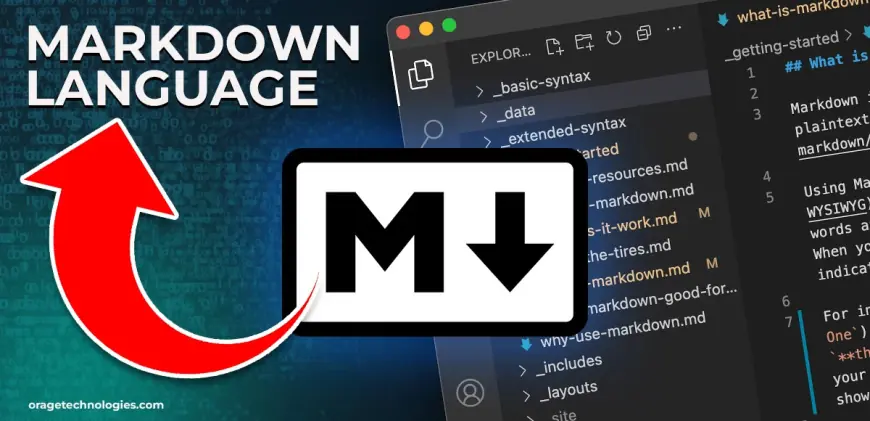Markdown Language: Illuminating the Path to Seamless Text Shaping

Markdown Language is a lightweight markup language designed to bring joy to text formatting, freeing you from the constraints of intricate editing tools. Crafted by John Gruber in 2004, it emerged from a vision to deliver an intuitive way to style text using plain syntax. This philosophy has endeared it to developers, writers, and creators, especially on platforms like GitHub and BitBucket, where it excels for static websites, documentation, and code databases—typically saved as .md or .markdown files. This illuminating guide takes you on an informative voyage, spotlighting its unique attributes, approachable syntax, online editing support , and practical application steps. Whether you’re a beginner or a veteran, it can revolutionize your productivity across various platforms in 2025, standing out as a cherished tool in the digital landscape.
What Characterizes Markdown Language?
Departing from WYSIWYG Norms
Unlike traditional editors like Microsoft Word, which rely on a "What You See Is What You Get" (WYSIWYG) model with buttons like "B" for bolding, markdown language forges a distinct path. It places content at the forefront, using punctuation and syntax from English and programming to shape text. This focus on essence appeals to those who value simplicity, and its scope broadens to include static website creation, documentation development, and code organization on Git platforms, presenting a versatile instrument for numerous projects.
Leveraging Syntax for Elegant Structure
Steering clear of visual tools, harnesses syntax to define text style. For example, text encased in double asterisks becomes bold, while text with a single asterisk turns italic. Headings form with hash symbols (# for H1, ## for H2), crafting a neat hierarchy effortlessly. Though it may initially puzzle those familiar with WYSIWYG or HTML, this technique soon feels intuitive. Its compatibility with MacOS, Windows, iOS, Linux, Android, and web applications cements it as a widely embraced formatting companion.
Unraveling Markdown Language Syntax
Engaging Examples of Headers and Formatting
-
Headers: # Header1 appears as Header1, ## Header2 as Header2, ### Header3 as Header3
-
Formatting: Italic Text renders as Italic Text, Bold Text as Bold Text
-
These instances employs graceful symbols to produce refined formatting, adaptable to diverse content needs.
Tackling the Learning Curve and Global Reach
Adopting this tool from traditional editors might demand a brief adjustment, particularly for users of graphical tools. However, with practice, its syntax becomes a welcoming ally. The language’s availability across platforms via apps and web tools ensures it connects with a worldwide audience, boosting its utility for content creation and editing in 2025’s digital arena.
Tapping into Markdown Language Online Editors
How Online Editors Enrich the Journey
Online editors are web-based marvels with a split-screen design, where one panel invites text with syntax and the other displays live formatted results. This real-time view encourages exploration, quick tweaks, and enhancements, making it a perfect fit for crafting blogs, documentation, or collaborative projects with flair.
Rewards of Online Editors
-
Real-time editing with split-screen preview quickens the creative pace
-
Effortless integration with GitHub and blogging platforms eases publishing
-
Facilitates collaboration with multiple users working together
-
Standout options include StackEdit, HackMD, Markable, Dillinger, and Folge.me
-
These tools elevate the enjoyment of using this tool for varied endeavors.
Setting Sail on Your Markdown Language Exploration
Gentle Start and Skill Refinement
It welcomes novices with no rigorous training needed. Enhance your prowess with Pandoc, a flexible compiler turning files into HTML, PDF, or DOCX, or sanity-plugin-markdown for added editing finesse. Its smooth integration with various apps makes it a satisfying tool for content management in 2025.
Utilizing the Markdown Cheat Sheet
A Cheat Sheet, offered in basic (Gruber’s original syntax) and extended versions, serves as a reliable guide. The basic syntax is universally supported, while extended options may vary by application. Downloadable from GitHub, this resource helps users master formatting rules with confidence, adding a layer of ease to their projects.
Conclusion and Insightful Reflections
Harnessing the Essence of Markdown Language
It emerges as a simple yet robust tool for text shaping, flourishing across multiple platforms. With steady practice and the integration of advanced tools, you can tap into its potential, creating outstanding content with ease. In 2025, staying aligned with updates will reinforce its role as a cornerstone of your digital toolkit.
Frequently Asked Questions
-
Is this tool a preferable alternative to HTML?
It simplifies basic formatting but falls short of HTML’s depth for complex designs.
-
How does Markdown Language contribute to AI?
It styles AI text outputs, such as code or explanations, for clear readability.
-
Does Google adopt Markdown Language?
Yes, it is employed for formatting documents, GitHub projects, and internal tools.
What's Your Reaction?
 Like
0
Like
0
 Dislike
0
Dislike
0
 Love
0
Love
0
 Funny
0
Funny
0
 Angry
0
Angry
0
 Sad
0
Sad
0
 Wow
0
Wow
0
















































